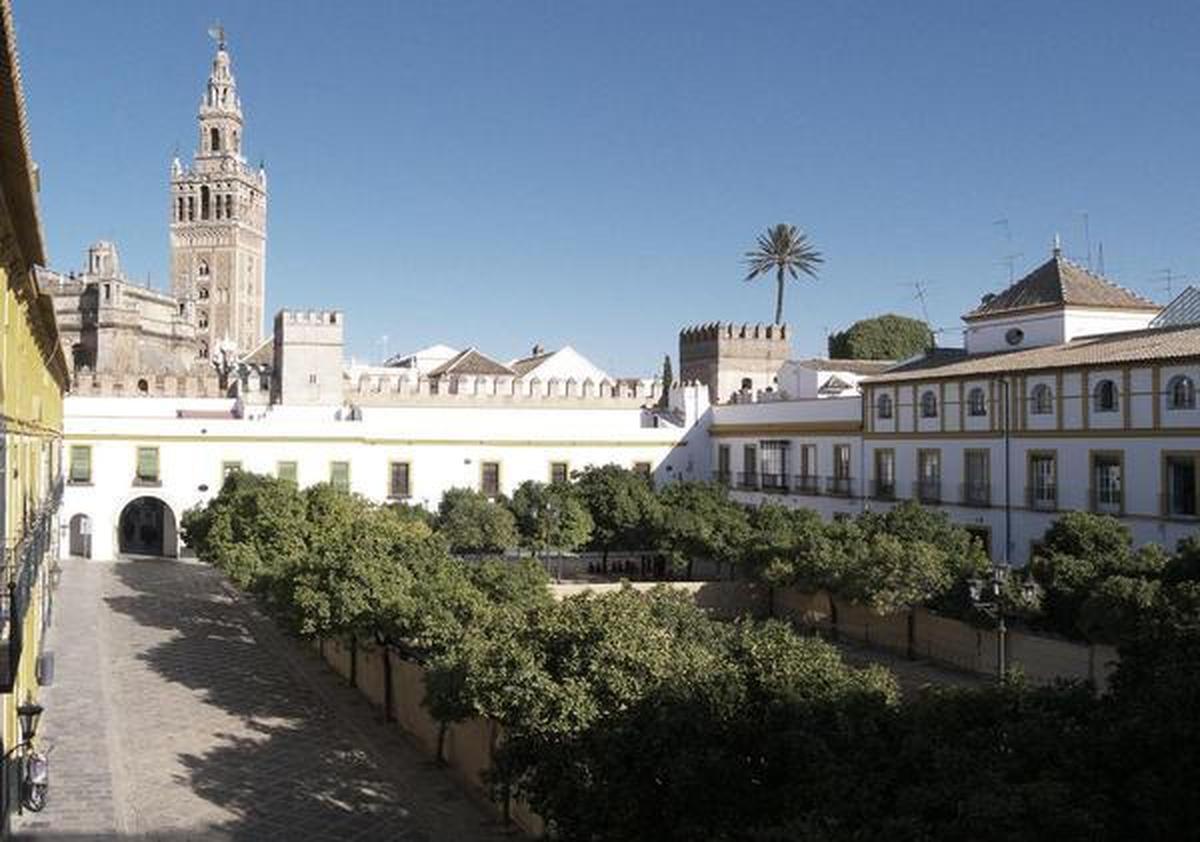En este lugar, donde aparecen algunos de los vestigios de actividad humana más antiguos de Sevilla –s. VIII a.C.– podemos localizar también el origen de los primeros alcázares árabes. En época de los Austrias fue transformado en plaza de armas y posteriormente en plaza de acceso al nuevo apeadero del Alcázar, diseñado por Vermondo Resta. Con forma de patio de vecinos y engalanada con naranjos amargos, esta plaza es actualmente el punto de salida del Alcázar, marco incomparable para la contemplación de la Giralda y puerta de acceso al barrio de Santa Cruz a través del callejón de la judería, donde una placa recuerda el amor circular del poeta Luis Cernuda por estos jardines: Ir de nuevo al jardín cerrado, Que tras los arcos de la tapia, Entre magnolios, limoneros, Guarda el encanto de las aguas. Oír de nuevo en el silencio Vivo de trinos y de hojas, El susurro tibio del aire Donde las almas viejas flotan. Ver otra vez el cielo hondo A lo lejos, la torre esbelta Tal flor de luz sobre las palmas: Las cosas todas siempre bellas. Sentir otra vez, como entonces, La espina aguda del deseo, Mientras la juventud pasada Vuelve. Sueño de un dios sin tiempo.
